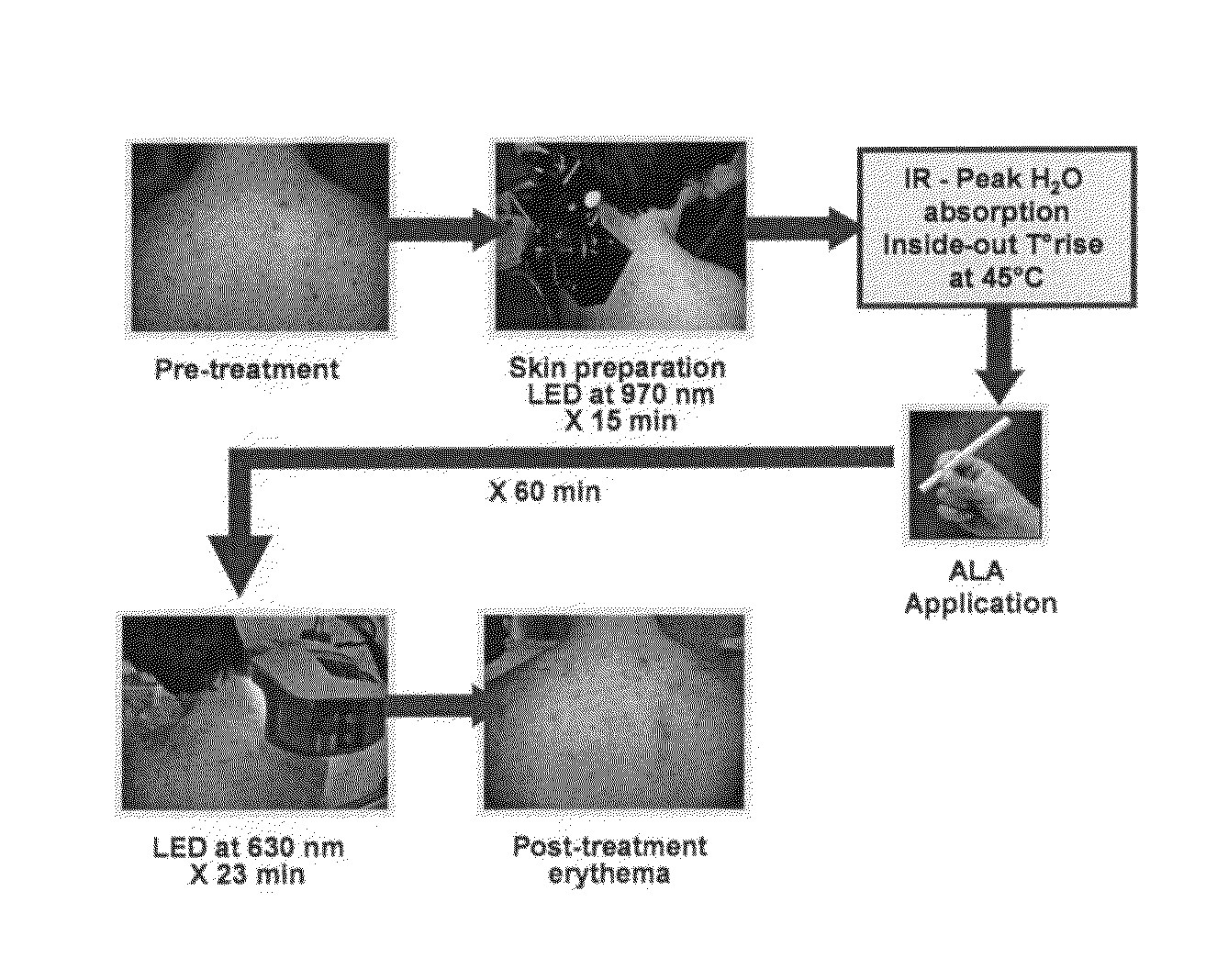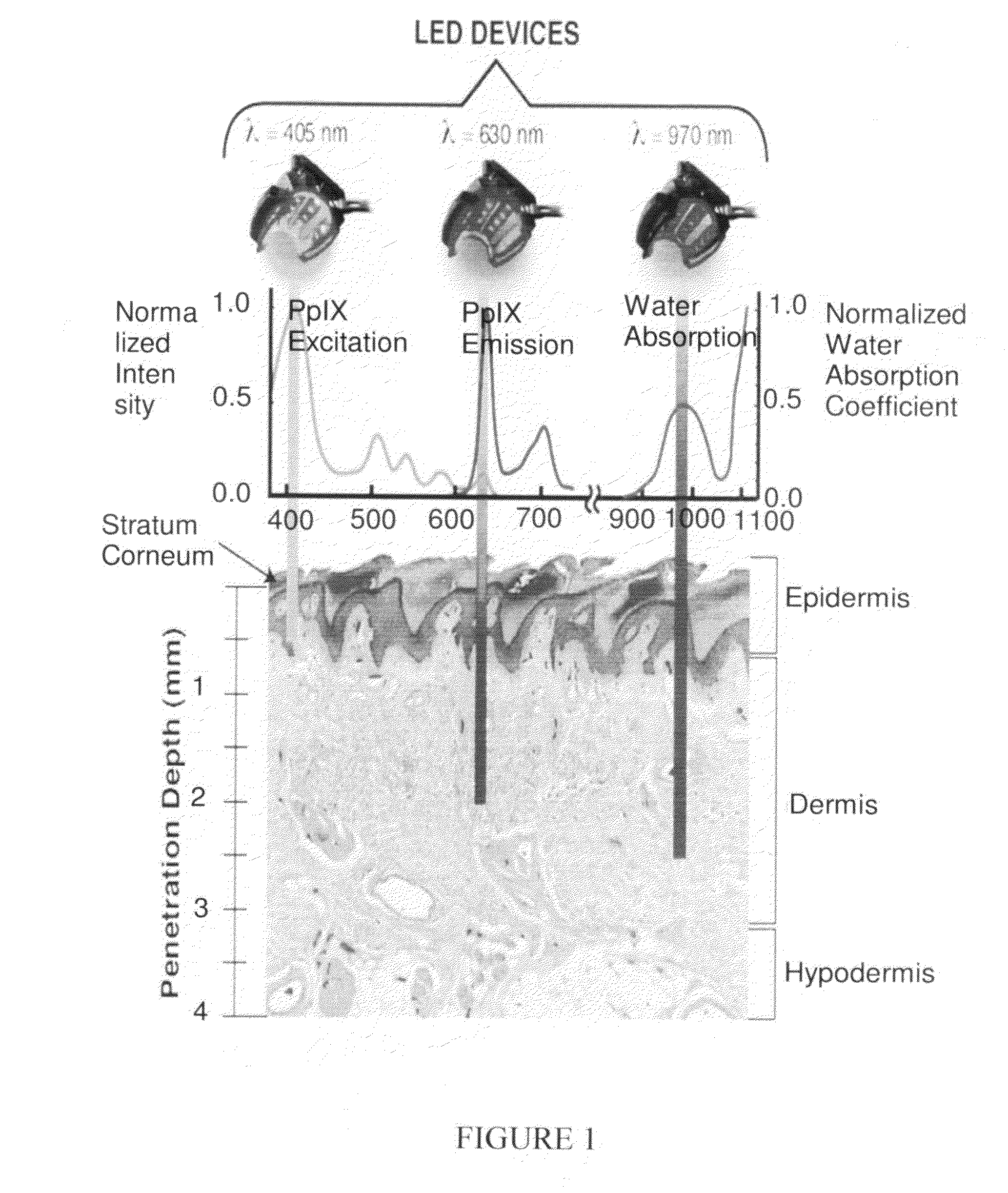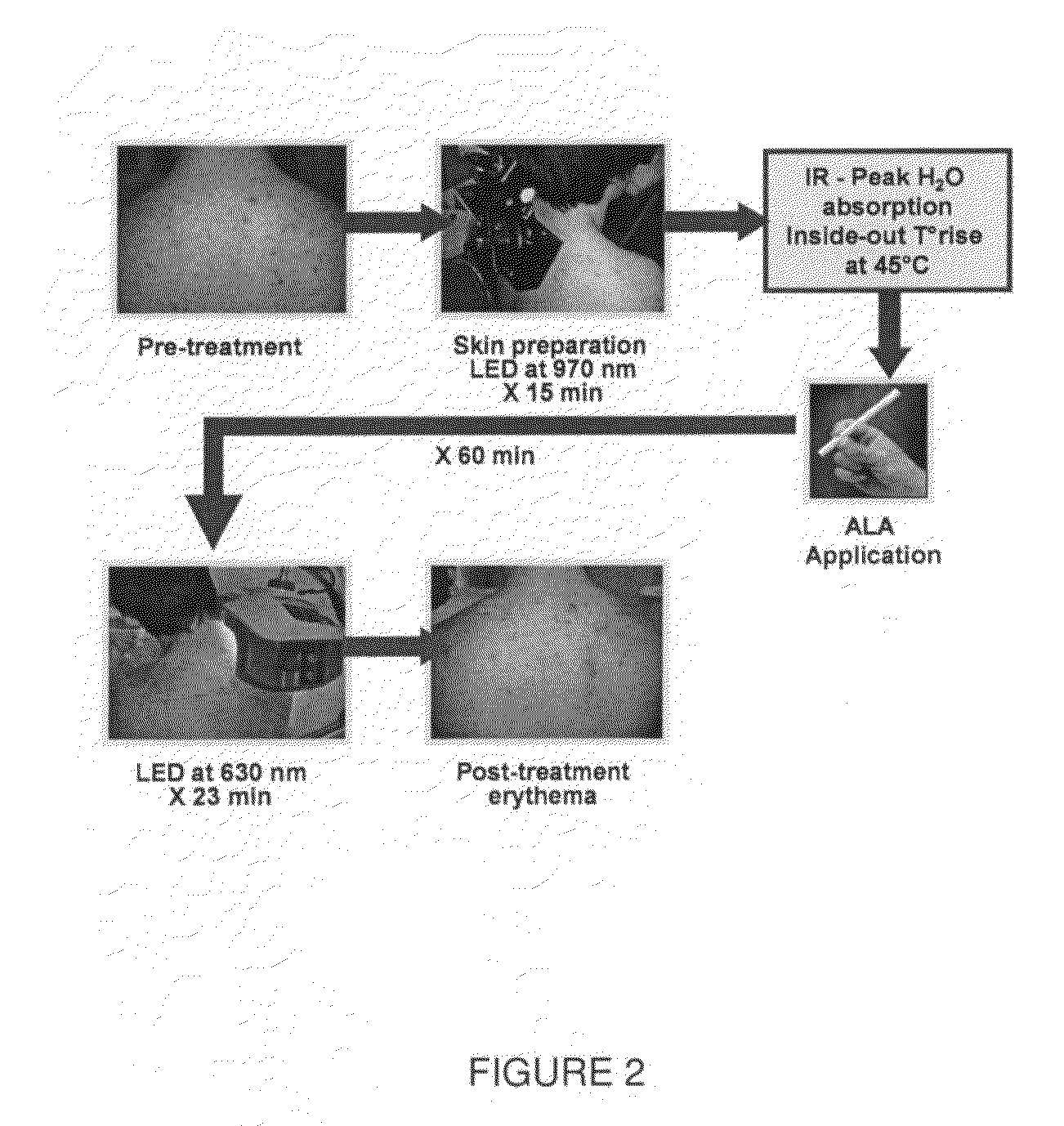Radiant near infrared light emitting diode exposure as skin preparation
a near infrared light and diode technology, applied in the field of dermatology, can solve the problems of reduced quality of life and self-esteem, inconvenient and side effects, and limited topical pdt efficacy, and achieve the effects of enhancing pdt efficacy, enhancing ala penetration and subsequent accumulation of ppix, and enhancing transcutaneous diffusion kinetics
- Summary
- Abstract
- Description
- Claims
- Application Information
AI Technical Summary
Benefits of technology
Problems solved by technology
Method used
Image
Examples
Embodiment Construction
[0019]Exposure to radiant infrared (IR) radiation in known to rise skin temperature via inside-out dermal water absorption and may be useful in PDT-ALA to promote ALA penetration and its conversion to PpIX [xxiv]. Radiant IR photopreparation by increasing skin temperature may thus lead to improved PDT results. In the present within-patient study, the effect of radiant IR exposure using light emitting diode (LED) at 970 nm prior to ALA-PDT application was examined in the treatment of 10 patients with mild to moderate inflammatory type acne. As the PDT light source, 630 nm LED illumination was employed as it is a deep penetrating well absorbed wavelength which falls into the PpIX absorption peaks (FIG. 1) [xxv,xxvi]. It was expected that the ALA-PDT IR pre-treated side would yield a better clinical outcome measured as the percent reduction in inflammatory acne lesion count four weeks post treatment compared to the control ALA-PDT alone treated side.
[0020]Materials and Methods
[0021]Pat...
PUM
 Login to View More
Login to View More Abstract
Description
Claims
Application Information
 Login to View More
Login to View More - R&D
- Intellectual Property
- Life Sciences
- Materials
- Tech Scout
- Unparalleled Data Quality
- Higher Quality Content
- 60% Fewer Hallucinations
Browse by: Latest US Patents, China's latest patents, Technical Efficacy Thesaurus, Application Domain, Technology Topic, Popular Technical Reports.
© 2025 PatSnap. All rights reserved.Legal|Privacy policy|Modern Slavery Act Transparency Statement|Sitemap|About US| Contact US: help@patsnap.com



